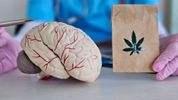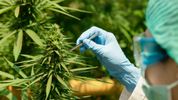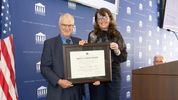Calling all product entrepreneurs: The U.S. Food and Drug Administration announced this week that hearing aids can finally be sold in the United States without a prescription as soon as October.
“There are so many people who need this care that there is more than enough of a market to go around," says Sarah Sydlowski, doctor of audiology and president of the American Academy of Audiology.
As new companies jump into this business, industry experts say we will see a hearing aid technology revolution, and costs tumble downward.
Better models, less visibility, more features, and greater ranges of affordability are expected to benefit the more than 28.8 million adults in the U.S. with mild to moderate hearing impairment, now that they can soon purchase hearing aids over the counter (OTC) without a doctor’s exam, prescription, or fitting adjustment.
Entrepreneurs are impressed by this new opportunity because the market is huge and mostly untapped. Few people who could benefit from hearing aids have actually ever used them: 16% of those aged 20-69, and 30% of seniors age 70 and up, according to the National Institute on Deafness and Other Communication Disorders. The technology is relatively simple, and it is a target rich environment for companies who believe they could invent a better product for nearly 30 million customers. Buyers saving time and money buy not having to pay for doctor visits and fitting appointments may be willing to pay a little more for a hearing aid they like.
The cost of hearing aids has remained in the thousands of dollars for high quality models. The majority of Americans do not have insurance to defray the cost of hearing aids. Fee for service Medicare does not cover the cost of hearing aids for most people. For those that do get a hearing aid benefit, it is only a limited discount that may not offer many options. Consumers have been left with a limited range of choice in the marketplace, with little help defraying the cost of newer models and better features. For those that do invest in the devices, they average $3,000 in out of pocket cost for hearing aids, according the the White House statement made this week.
The FDA's Final Rule states that hearing devices for those with profound hearing loss, cochlear implants, and devices for children, are not included in this new Rule, and all will still require a doctor's exam, prescription, and fitting adjustments.
The Final Rule clarifies that Personal Sound Amplification Products (PSADs) are not medical devices. They remain consumer products used by those with normal hearing to amplify sound.
The FDA's announcement noted that since the proposed rule was issued last fall, more than 1,000 public comments were submitted by, "consumers, professional associations, hearing aid manufacturers, public health organizations and advocacy groups, members of Congress, state agencies, and other stakeholders."
In response, the FDA said, "the final rule incorporates several changes from the proposed rule, including lowering the maximum sound output to reduce the risk to hearing from over-amplification of sound, revising the insertion depth limit in the ear canal, requiring that all OTC hearing aids have a user-adjustable volume control, and simplifying the phrasing throughout the required device labeling to ensure it is easily understood. The final rule also includes performance specifications and device design requirements specific to OTC hearing aids."
The FDA also issued its final guidance, "Regulatory Requirements for Hearing Aid Devices and Personal Sound Amplification Products (PSAPs)." This guidance and the FDA corresponding new rules for hearing aids are available for review by any business interested in entering this market.
photo credit: webmd
"[W]e'll also see a technology revolution as new companies enter the hearing care market" ~ Nicholas Reed, Assistant Professor of Epidemiology at the Johns Hopkins Bloomberg School of Public Health
 unknownx500
unknownx500










